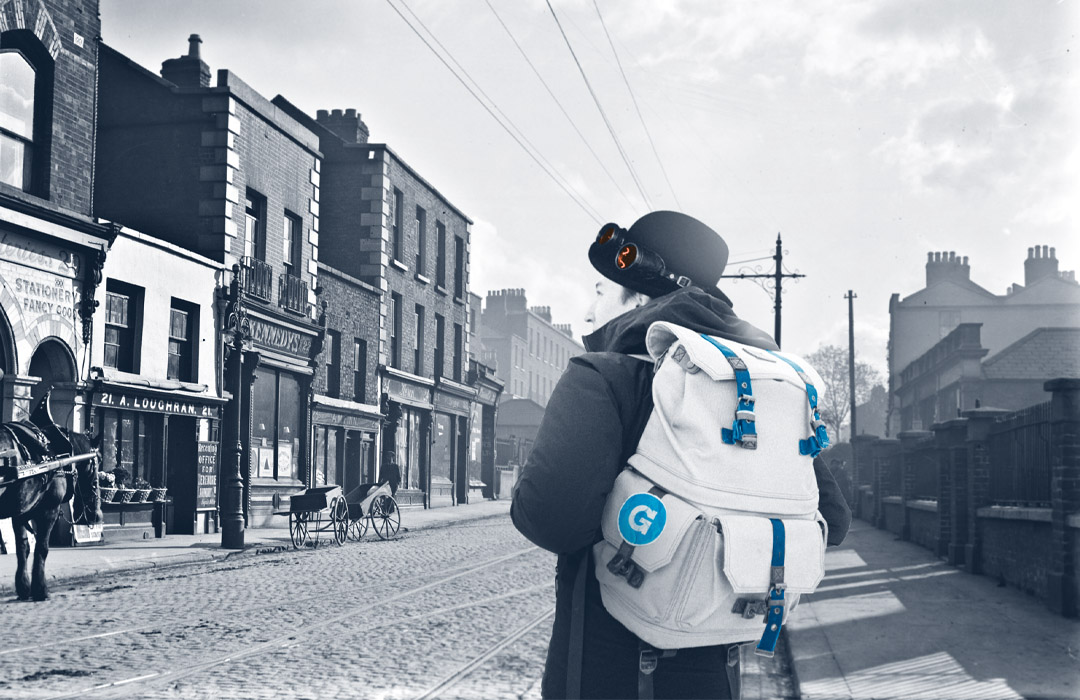It’s no secret that GROWL Agency is an inbound marketing agency. We’ve covered before how we use inbound methodology to attract the right people to our brand instead of casting a wide net of potentially uninterested prospects. An integral part of the inbound methodology—and marketing in general—is understanding the buyer’s journey, also known as the buyer’s path to purchase. Barring spontaneous purchases, most buyers don’t wake up and decide to buy on a whim—they follow the process of becoming aware of a problem they have, considering options to solve that problem, and deciding on the right vendor to provide a solution. For a review of the stages of the buyer’s journey, our friends at HubSpot have you covered.
You want the buyer to decide on your service, so your job is to effectively guide them through the buyer’s journey with compelling content that targets their needs and their stage within the buyer’s journey. But with so many types of content to create—blogs, ebooks, webinars, case studies, white papers, etc.—how do you decide on the best content for each stage of the buyer’s journey? Simply follow GROWL’s guide to the buyer’s journey for tips on creating effective content for each stage.
CREATING CONTENT FOR THE BUYER’S JOURNEY
Since modern buyers are more informed than ever before, marketing and sales tactics have shifted from selling to the mindset of helping. When applying the inbound methodology to creating content for the buyer’s journey, the key is to provide value to your prospects, thus removing pushy sales tactics from the equation. As we map out content for the buyer’s journey, keep this in mind. It’s vital to understand your prospect’s needs and their research behavior, so outline your buyer’s personas before moving forward with content mapping.
THE AWARENESS STAGE
Before a buyer is even aware of your brand or product, they’re trying to solve a problem or get an answer. Your goal is to attract them to your service by creating content to help them understand their problem. Content needs to be easy to discover and consume at this stage, meaning an effective SEO strategy is key to locking in your target audience. For example, say your company offers data management software for emerging technology companies. Consider your prospect’s pain points. What search terms are they using? What free resources may genuinely help them? How can you make it easy for them to access this content? Answering these questions will form the basis of your content strategy for the awareness stage.
Effective content formats for this stage include:
- Search engine marketing
- Blog posts
- Checklists
- Infographics
Keep in mind since there’s no guarantee a prospect will buy from you at this stage, their value as a lead is low. However, compelling and valuable content may encourage them to journey onto the next stage.
THE CONSIDERATION STAGE
At this point, your prospects fully understand their problem and are researching all available solutions. When your prospects are at this point in the buyer’s journey, their value as a lead rises since their likelihood of buying from you increases. When creating content for this stage, your job is to show prospects why your solutions are the best fit. Let’s use our pretend data management software company as an example. So, you’ve attracted prospects looking for data management solutions. How do you convince them that your solutions are right for them? Content that provides specific examples of your track record, such as case studies, is great at this stage.
Other types of content for the consideration stage include:
- Comparison guides
- Gated eBooks
- Free samples
As mentioned before, strategically gated content to capture leads is effective at this stage. If your content provides value, prospects will be more willing to hand over their valuable contact information allowing you to gate the right content at the right time.
THE DECISION STAGE
Now that your prospect is armed with information from the awareness stage and has researched all available solutions in the consideration stage, it’s time for them to decide which vendor is right for them. At this stage in the buyer’s journey, you’ll want to go all-in on touting the benefits of your product or service. Since your brand is on their radar from their consideration stage, it’s time to encourage them to choose you by showing specific examples or driving them to your sales team. Offering a demo is perfect for the decision stage of the buyer’s journey.
Since you want to focus on driving your prospect’s purchase, here are other effective content formats for the decision stage:
- Free trials
- Consultation offer
- Coupons
A common mistake brands make is hopping straight to creating content for the decision stage, such as offering a demo as the first CTA on their website. Understanding your prospects and strategically tailoring your content to the buyer’s journey will help you improve brand awareness and increase conversions.
Contact the GROWL team today to learn more about applying the Buyer's Journey to your flywheel.
